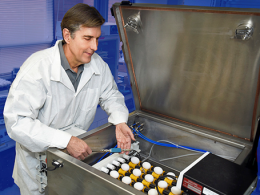
Photo: https://www.sciencedirect.com/science/article/pii/S0023643820301031
Spaghetti alla carbanara is a an Italian dish with a sauce made from raw eggs. The eggs are heated by the residual heat from the cooked pasta. But that heat treatment may not be sufficient to inactivate potential Salmonella bacteria.
Research was conducted by inoculating the beaten egg mixture with five strains of Salmonella. The recipe was prepared and temperatures were taken at various points to determine if the heat treatment reduced the Salmonella. It was found that the Salmonella was reduced by about half, but there was still enough viable bacteria to potentially cause foodborne illness.
Without knowing if eggs are contaminated or not, it is best to use pasteurized eggs to effectively reduce contamination risks. This is especially important for older adults and those with immuno-compromised health.




